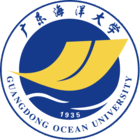详细信息
Metagenomic Analysis of Bacterial Communities and Antibiotic Resistance Genes in Penaeus monodon Biofloc-Based Aquaculture Environments ( SCI-EXPANDED收录) 被引量:14
文献类型:期刊文献
英文题名:Metagenomic Analysis of Bacterial Communities and Antibiotic Resistance Genes in Penaeus monodon Biofloc-Based Aquaculture Environments
作者:Chen, Xieyan[1];He, Zihao[1];Zhao, Jichen[1];Liao, Minze[1];Xue, Yuan[1];Zhou, Jianing[1];Hoare, Rowena[2];Monaghan, Sean J.[2];Wang, Na[3];Pang, Huanying[1,4];Sun, Chengbo[1,5]
机构:[1]Guangdong Ocean Univ, Coll Fisheries, Zhanjiang, Peoples R China;[2]Univ Stirling, Inst Aquaculture, Stirling, Scotland;[3]Chinese Acad Inspection & Quarantine, Beijing, Peoples R China;[4]Guangdong Higher Educ Inst, Key Lab Control Dis Aquat Animals, Guangdong Prov Key Lab Pathogen Biol & Epidemiol, Zhanjiang, Peoples R China;[5]Southern Marine Sci & Engn, Guangdong Prov Lab, Zhanjiang, Peoples R China
年份:2022
卷号:8
外文期刊名:FRONTIERS IN MARINE SCIENCE
收录:SCI-EXPANDED(收录号:WOS:000745692600001)、、Scopus(收录号:2-s2.0-85123217734)、WOS
基金:This study was supported by the key research and development projects in Guangdong Province (Grant No. 2020B0202010009), the Project of 2019 Annual Guangdong Provincial Special Financial Fund (Grant No. 2319412525), the Fangchenggang Science and Technology Plan Project (Grant No. AD19008017), the National Natural Science Foundation of China (Grant No. 32073015), and the Natural Science Foundation of Guangdong Province (Grant No. 2021A1515011078).
语种:英文
外文关键词:metagenomic analysis; antibiotic resistance genes; bacterial community; Penaeus monodon; biofloc
外文摘要:Biofloc technology (BFT) is one of the most promising technologies in global aquaculture for the purpose of improving water quality, waste treatment, and disease prevention in intensive aquaculture systems. However, characterization of the microbial species and antibiotic resistance potentially present in biofloc-based aquaculture environments is needed. In this study, we used high-throughput sequencing technology to comprehensively compare the bacterial communities in mariculture ponds of Penaeus monodon (P. monodon), by testing of water, biofloc, and intestine of P. monodon. Operational taxonomic units (OTUs) cluster analysis showed that the nine samples tested divided into 45 phyla and 457 genera. Proteobacteria was the dominant bacteria in water, biofloc and prawn intestine. In biofloc and intestine, the Ruegeria (2.23-6.31%) genus represented the largest proportion of bacteria, with Marivita (14.01-20.94%) the largest group in water. Microbial functional annotation revealed that in all the samples, genes encoding metabolism were predominant. The antibiotic resistance gene annotation showed the highest absolute abundance of patB, adeF, OXA-243, and Brucella_suis_mprF from Proteobacteria. PatB (11.33-15.01%), adeF (15.79-18.16%), OXA-243 (35.65%), and Brucella_suis_mprF (10.03%) showed the highest absolute abundance of antibiotic resistance genes in water, biofloc, and intestines, respectively. These findings may greatly increase our understanding of the characteristics of the microbiota of shrimp biofloc-based aquaculture systems and the complex interactions among shrimp, ambient microflora, and environmental variables. It provides a reference basis for policy on breeding, environmental safety, and maintaining food safety in the production of P. monodon.
参考文献:
![]() 正在载入数据...
正在载入数据...


